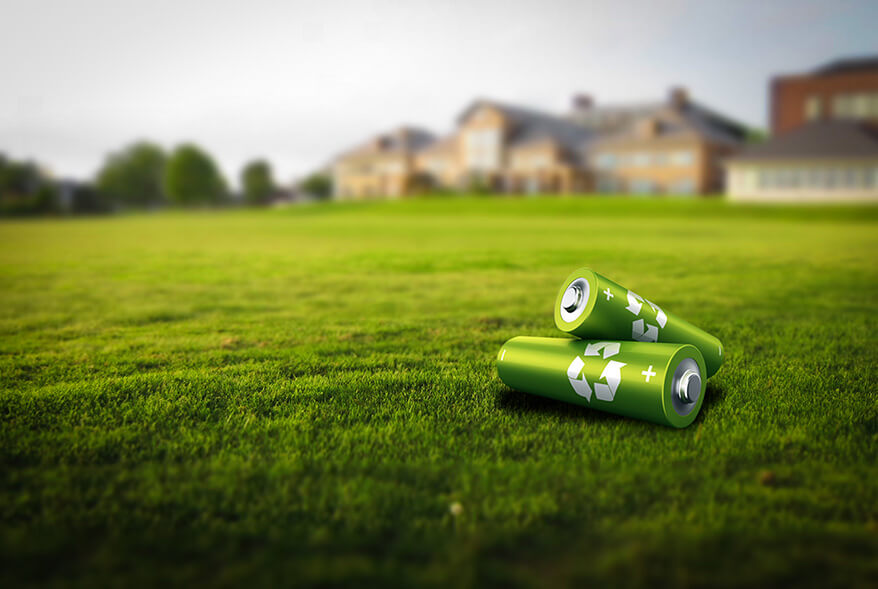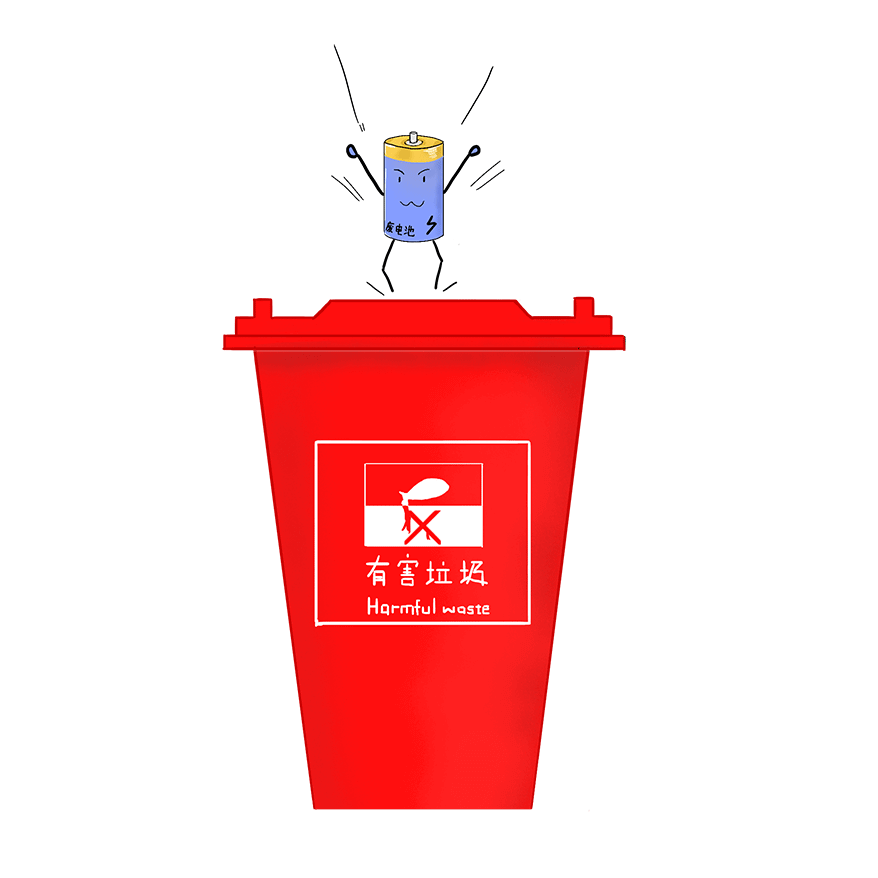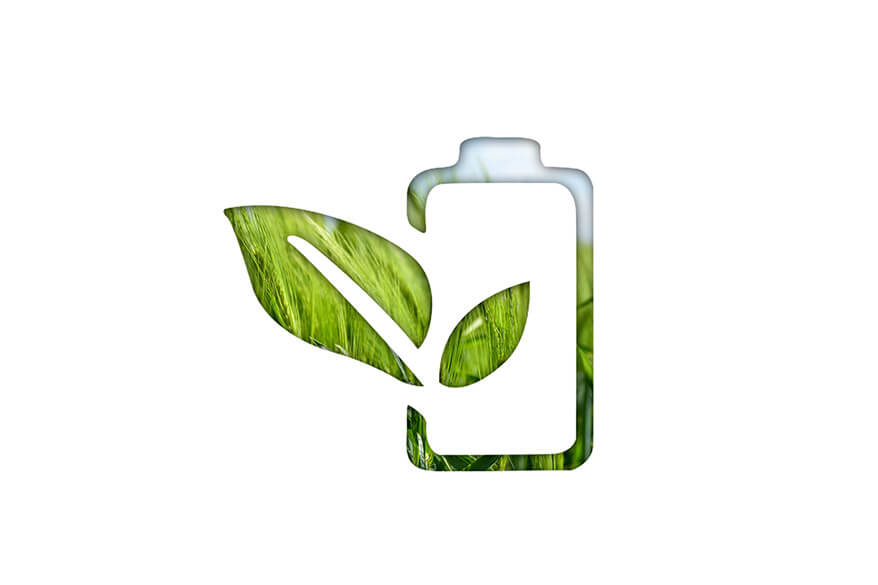Disposal of lithium batteries effectively
May 06, 2019 Pageview:1337
Lithium and lithium-ion batteries are commonly used to power computers, cellphones, cameras, watches, and other electronics. Lithium-ion batteries are often rechargeable, while regular lithium batteries usually aren’t. Because batteries that contain metal area unit reactive and contain dangerous materials, you must not place them within the trash. To dispose of lithium batteries, you’ll need to take them to a recycling center, which is easy to find online.
Finding a recycling
1. Keep batteries out of your regular recycling bin. Batteries are recycled separately from other items. Mixing batteries in with other recyclables can result in a fire, as the battery can spark. You’ll need to take your batteries to a facility that collects batteries.
2.Search for a store that collects lithium batteries for a convenient option. Many chains and big box stores recycle batteries on behalf of customers. Stores often collect batteries for free, but some charge a small fee for certain types of lithium batteries. These services are meant to help with household waste, so the stores may limit how many batteries you can turn in at a time.
Several chain stores that sell natural philosophy or batteries collect Li batteries for utilisation, as well as the following:
Best Buy
Staples
Lowes
Home Depot
3. Ask your local library or community center about battery collection. Some libraries and community centers have battery assortment bins or host battery assortment events. While not all areas offer this service, it’s a good idea to check with your local library or community center.
For example, they may have a special recycling bin where you can deposit batteries.
They may collect the batteries on certain days, so check in advance to make sure your batteries will be collected.
4. Take them to a household hazardous waste center, if your area has one. Some local governments collect household hazardous waste from citizens, which includes lithium batteries. In some cases, they may have a designated center that collects the items year-round, which is called a household hazardous waste center. However, some areas host recurring collection events for hazardous waste.
You can find your local center by visiting your state or local government’s website.
If your area doesn’t have a household hazardous waste center, see if your local or regional government hosts a Household Hazardous Waste Collection event. These events often occur regularly, such as annually.
5. Consider using a mail-in program if it’s more convenient: A mail-in program can be a great option if you regularly need to recycle lithium batteries. For example, you might work in an office that uses lithium batteries. Mail-in programs are also helpful if you don’t live close to a recycling collection center.
You may be able to mail-in the battery to the manufacturer.
You may need to purchase supplies to mail in your batteries, which you can buy online from recycling sites.
Disposal of lithium batteries in different applications
Say car batteries, Car batteries have chemicals which can damage the environment. Dispose of automotive batteries at a battery recycling center or an area automobile provide store.
Automotive batteries - both lead-acid batteries and nickel-metal hydride (NiMH) batteries used for hybrid vehicles - eventually wear down and need replacing. But getting rid of an old car battery once you get a new one isn’t quite as simple as throwing the old one away in the trash. Because of the environmental health consequences, irresponsibly throwing a car battery in a trashcan or dumpster could subject you to serious fines or penalties.
Old car batteries - especially lead-acid batteries - contain a lot of toxic chemicals which, if let to simply rot in the ground, will contaminate the soil with lead, chemicals, acids, and non-biodegradable plastics.
Lead is a particularly harmful element that is not only highly toxic but also very difficult to clean up, and it can have lasting effects on the environment for many years after contamination. It is particularly worrisome for children in that it can cause devastating damage to developing nervous systems and irreparable brain damage.
Each lead-acid automobile battery contains about 20 pounds of lead – that could be a heap, and is sort of valuable similarly. We need lead to produce wind turbines, cell phone towers, and after all, additional automobile batteries. Because of the demand, lead-acid batteries can be recycled, and in some cases, you can get paid for your efforts.
Always remember to dispose of your car batteries responsibly, and never throw them in the trash or a dumpster. Follow the steps below for a few concepts on the way to properly eliminate your previous automobile battery.
The way to tell once an automobile battery must get replaced the typical period of a car battery is 3 to 5 years. That is just an average timeline, so your car battery could last a much longer time or even a shorter time. Several things can deem your battery faulty including:
A cracked battery case
A bulging, frozen battery
A battery with the cell covers missing or broken
A depleted battery that won’t accept a charge
If you find your battery is leaking fluid or is bulging from being frozen, it should be replaced immediately. If the covers on your battery that prevent fluid from spilling out are missing or damaged, discard the battery if replacement caps are not available from your local auto parts store.
If your battery is depleted, it is recharged ofttimes and still be used. In some cases where the battery has been charged and still does not provide enough power to operate your car, it will need to be discarded. You can also bring your battery into many auto parts stores where they will perform a load test to check your battery’s condition.
Tip: A load test checks the battery’s charge level as well as the amount of amperage it maintains while under load. Essentially it simulates the draw on your battery when you try to start your car.
If your battery is deemed faulty, is damaged, or fails a load test, it will need to be replaced.
Warning: Car batteries are filled with sulfuric acid which is highly corrosive. It also contains several lead plates which are not only harmful to the environment if disposed of improperly but are harmful to you if you come in contact with them directly. Do not attempt to open a car battery.
Warning: Always wear heavy protective gloves when handling car batteries.
Warning: If the internal fluid in the battery leaks onto your car’s upholstery or carpeting, it will cause discoloration and will eat into the surface before it becomes neutralized.
To properly get rid of a car battery entails bringing it to a location that can handle the car battery safely on your behalf.
Bring the battery to a utilisation depot
Step 1: Finding recycling location. Use your local phone book, or use an online search engine such as Google to find locations near you that accept car batteries for recycling.
Sometimes your local dump or department of sanitation will have a recycling program for hazardous or toxic materials, but call and make sure they take used batteries before bringing it in. You can’t simply throw the battery in your recycling bin.
If you do a quick search online, some recycling programs offer pick-up services for certain hazardous materials. AAA has a great system for recycling old batteries known as the AAA Great Battery Roundup program.
If you have a NiMH battery for a hybrid vehicle, check the label on the battery or call the auto manufacturer to learn about proper recycling methods. In either situation, with a lead-acid battery or NiMH battery, you may get paid for recycling.
Step 2: Confirm that they take car batteries. Call ahead to confirm they accept car batteries before bringing it in.
Step 3: Secure the battery in your vehicle. Place the battery in your vehicle’s trunk, hatch, or on the floor on a safe, disposable item. Use a section of plywood, a heavy plastic lid, or a metal item like a garbage can lid. Make sure it won’t slide around to prevent the heavy battery from damaging your car or other items around it.
Step 4: Check in with attendant. When you arrive at the battery recycling depot, check in with the attendant on duty. Inform them you wish to dispose of a car battery.
Step 5: Have your battery recycled. Have the attendant safely remove the old car battery from the back of your vehicle.
Tip: Some recyclers will pay you for the car battery. Check with the service you’re exploitation to see if you’ll able to expect to receive something for your old car battery.
Part 4 of 7: Take the battery to a elements store
Step 1: Take the battery to an auto shop or elements store. In all probability common thanks to recycle a car battery is to require it to your native auto shop or auto elements store, wherever automobile batteries are sold.
When you purchase a new battery bring the old one with you.
Make sure it’s wrapped in thick plastic to safeguard it from leaking chemicals and contaminating the environment, and ruining your car’s interior in transport.
You will receive a “core charge,” and you may receive a substantial sum in return for bringing in a used car battery.
The best part about this method is that they completely take it off your hands so you no longer have to deal with it.
- Prev Article: What is a lithium-ion battery pack?
- Next Article: Lead-acid batteries leak and deform, what should we do
Leave Message
Hottest Categories
-
Hottest Industry News
-
Latest Industry News












